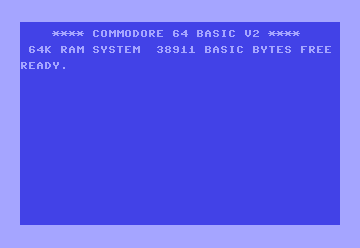
WAIT: Your Code's Traffic Light
Need to pause your Commodore 64 program until a specific condition is met? Look no further than the WAIT command, your code's traffic light! This handy tool lets you put a temporary hold on your program's execution until a particular memory address has a specific value. It's like telling your code to "wait here" until the green light appears!
Syntax
WAIT <address>,<mask>[,<compare>]
Where:
<address>: The memory address (0-65535) you want to monitor.<mask>: A bitmask (0-255) used to isolate specific bits at the address. It works like a stencil, only letting you see the bits that "poke through."<compare>(Optional): A value (0-255) to compare against the masked bits. If omitted,WAITwill pause until any of the masked bits change.
Applications
The WAIT command is invaluable for:
- Synchronizing with hardware: Pause your program until a joystick button is pressed, a timer reaches a certain value, or a specific input is received from a device.
- Creating timing loops: Use
WAITin combination with a system timer to create precise delays or synchronize events. - Customizing behavior: Trigger specific actions based on changes in hardware registers or memory locations.
Understanding Bitmasks
Bitmasks can seem a bit mysterious, but they're essentially just patterns of 1s and 0s used to filter out specific bits of information. Each bit in the mask corresponds to a bit in the memory address you're monitoring.
- A '1' in the mask means you care about that bit's value.
- A '0' in the mask means you want to ignore that bit.
Code Examples
1. Waiting for a Key Press:
10 WAIT 653,1 :rem Wait until a key is pressed (653 is the keyboard buffer address)
20 GET K$ :rem Read the pressed key
30 PRINT K$
This example pauses the program until a key is pressed, then reads and prints the key's value.
2. Custom Timing Loop:
10 TI$="000000" :rem Initialize timer string (TI$ is a system variable for time)
20 WAIT 56320,128 :rem Wait for 1/60th of a second (jiffies counter bit 7)
30 TI$ = TI$ + "1" :rem Increment the timer string
40 IF TI$ = "001000" THEN PRINT "One second elapsed!"
50 GOTO 20
This snippet uses WAIT to create a timing loop that prints a message every second.
WAIT in the Wild: The Joystick Game Controller
Imagine you're creating an action game for the Commodore 64. WAIT would be your key to controlling the game's responsiveness. You could use WAIT to pause the game loop until the joystick is moved or a button is pressed, ensuring that the game only updates when the player takes action.
Don't let your programs rush ahead without a care in the world! With WAIT, you can create pauses, synchronize with external events, and add a layer of control and responsiveness to your Commodore 64 creations. It's like having a built-in traffic light for your code, ensuring everything runs smoothly and efficiently. So go ahead and let WAIT work its magic, keeping your programs in perfect sync with the world around them!
